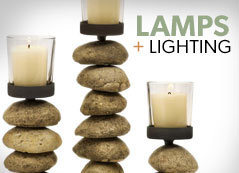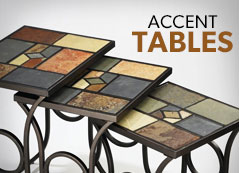
Bringing the Garden Indoors
Have you ever thought about creating an outdoor room and enjoying your garden all year long? Everybody craves time in the great outdoors, but due to change of seasons, we can't all enjoy nature's life all year long. The good news is, you don't have to give up the serenity of a garden once winter rolls around because now you can simply bring your garden indoors! With some creative design work, you can make any room feel full of plant life, no matter what Mother Nature has in store.
The first place to bring plants to your home is to place them by your windows. To help bring the garden indoors, try to establish a visual connection between the two. You know, so you can see plants inside and outside of your home.
Here are a few more tips. French doors and sliders extend your eyesight beyond the boundaries of a room, while lowering windows to seating height, wrapping them around corners or installing bay windows can help draw a room into the landscape. To strengthen that connection, forgo heavy window treatments in favor of sheers or shades made from natural materials such as woven grass or bamboo.
Think about your floors. If the room has a patio, extending the flooring into the landscape will help bring the garden indoors, making the two flow together. Use piece like tile, slate, bluestone, bricks and concrete which are ideal for this purpose. You also might want to think about covering the floor with material or painted wood for an outdoorsy look.
Now let's talk about your walls. You should consider painting the interior walls to match the dominant colors in your garden. Have the color of blooms or leaves in pillows, lamps or other accessories. You might even consider wrapping exterior siding such as shingles or clapboard around the inside walls which is a great way to make a sunroom or den feel like an old porch that's been enclosed.
Next lets concentrate on your furniture. Consider buying furnishings made from natural fibers such as wicker. Consider having the theme of your furniture having cotton or linen fabrics in stripes, solids or large floral colors to bring the garden indoors year-round. You could even use many of the outdoor fabrics on the market. Rustic furniture and chairs are another great way to bring the outdoors. You can find old metal garden furniture at antiques shops and yard sales as well as online. To complete the setting, use a painted bench for a footrest or side table or make your own table from a planter topped with a piece of glass or stone. Hammocks inspire instant relaxation. So why confine them to the great outdoors? Hang one across the corners of a room and bring the garden indoors all year long!
Now let's talk about accessories. Feel free to accessorize your rooms with garden implements such as tin watering cans, statues, birdhouses, or even something as simple as a glass bowl or hurricane lamp filled with rocks or shells. They will all look great displayed on shelves and table tops. Crave the sound of water? Consider installing a fountain. You want your accessories to underscore the decor.
Now let's get to the main item for bringing that garden indoors, which would be your plants! You will want plants large with lush flora such as palms, umbrella trees and weeping figs. They will all help bring the garden indoors. Unless you're running a plant hospital, avoid spindly little specimens or plants grouped on shelves or stands because the 1970s are over and it's time to move on. Got a brown thumb? Fill a bowl with lemons, green apples, dried pomegranates or even acorns or leaves. And unless you suffer from allergies, leave the fake plants to fast-food restaurants and hotel lobbies. Nobody should have to live in a house that looks like Denny's!
Ok, let's talk more about having your houseplants inside. If you follow these easy tips, you will be able to keep them happy and healthy. First, wash foliage thoroughly with plain water. Wipe off the top and bottom of each leaf. Then use an insecticidal soap, such as Safer Insect Killing Soap, to finish the job. Then water the plant with a systemic insecticide. You will want to check with your garden shop for the best one, and apply it according to the manufacturer's directions. Dab rubbing alcohol on visible insects. A cotton swab works great for this. Clean the outside of each pot. Pay special attention to the bottom, removing insects and debris.
Another thing to think about, indoor placement is critical to most houseplants! Keep them away from heat registers and cold drafts. Direct sunlight shining through a window can scald even the toughest leaves, so back the plants away just a bit for optimum light. The lack of humidity in the home makes soil dry faster than when the plants are living outdoors. At first, check them every few days to determine what your watering schedule should be. If you're unsure about whether it's time to water, pick up the containers. Light pots are dry pots. Or invest in a moisture meter. Also, be sure to buy one with a long probe so you can determine how dry the soil is more than a few inches below the surface. With these simple tips, you can bring in your houseplants without any surprises.
Now that you've thought about creating an outdoor room and enjoying your garden all year long., it's time to do it! With some creative design work, you can make any room feel full of plant life, no matter what Mother Nature has in store. Best of luck in redesigning your home to have a beautiful year around garden effect!




























